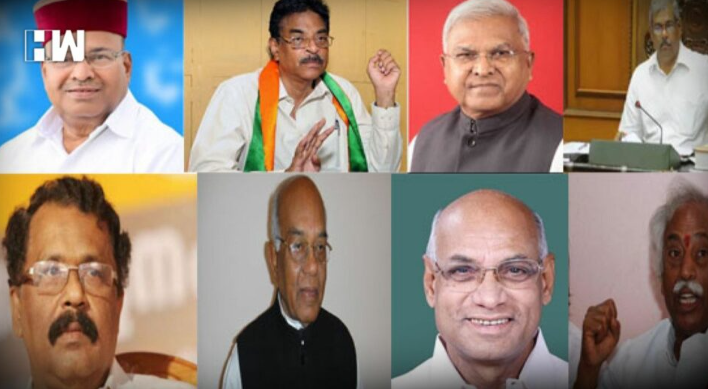Recent Changes in Governorship: Appointment and Reshuffling (GS Paper 2, Polity & Governance)

Introduction:
- Recently, the President of India appointed six new Governors and reshuffled three others, marking significant changes in the gubernatorial positions across various states.
- This article explores the appointment process of Governors, their roles, privileges, and the constitutional provisions related to their office.
What is the Appointment Process for the Governor?
Overview:
- The Governor serves as the chief executive head of a state in India, a role adapted from the Canadian model.
- This position is crucial for maintaining the constitutional machinery within states.
Key Points:
- Appointment: The Governor is appointed by the President of India, who does so by warrant under his hand and seal. The President must consult the Chief Minister of the concerned state to ensure the smooth functioning of the state’s constitutional machinery.
- Non-Election: Unlike the President of India, the Governor is neither directly nor indirectly elected. Instead, the appointment is made by the President.
- Tenure: The Governor holds office at the pleasure of the President and can be removed by the President at any time. The Supreme Court has ruled that the President's pleasure is not justifiable in courts (Surya Narain v Union of India Case, 1982). However, the Governor's role is independent of the Central Government, as confirmed in Hargovind Pant Vs. Raghukul Tilak Case.
Conditions of the Governor’s Office:
- Official Residence: The Governor is entitled to use the Raj Bhavan without paying rent.
- Emoluments and Allowances: These are determined by Parliament and cannot be reduced during the Governor's term. If a person is appointed as the Governor of multiple states, the emoluments and allowances are shared among the states based on a proportion determined by the President.
Privileges of the Governor:
- Immunity: Under Article 361, the Governor enjoys personal immunity from legal liability for official acts. He cannot be arrested or imprisoned during his term. Civil proceedings against the Governor can only be initiated after a two-month notice, and only for personal acts.
- Oath: The Governor must take an oath to faithfully execute his office, preserve and protect the Constitution, and serve the people of the state. This oath is administered by the Chief Justice of the concerned state high court or the senior-most judge available.
Constitutional Provisions Related to the Governor:
- Article 153: Mandates the appointment of a Governor for each state, although a single person can serve as Governor for multiple states, as recommended by the Sarkaria Commission.
- Articles 157 and 158: Define the eligibility criteria for the Governor’s role.
- Article 163: Establishes a Council of Ministers with the Chief Minister to aid and advise the Governor in the exercise of his functions, except in specific discretionary matters.
Recent Developments:
- The recent appointment of new Governors and the reshuffling of others underscore the dynamic nature of gubernatorial roles in India.
- These changes are part of the broader political and administrative adjustments made by the Central Government to align state governance with national objectives.
Conclusion:
- The office of the Governor plays a pivotal role in the Indian federal structure, balancing the interests of the central and state governments.
- Understanding the appointment process, privileges, and constitutional provisions associated with this role is essential for grasping the nuances of Indian governance.
- The recent appointments and reshuffles highlight the ongoing adjustments in administrative leadership aimed at ensuring effective governance across states.


